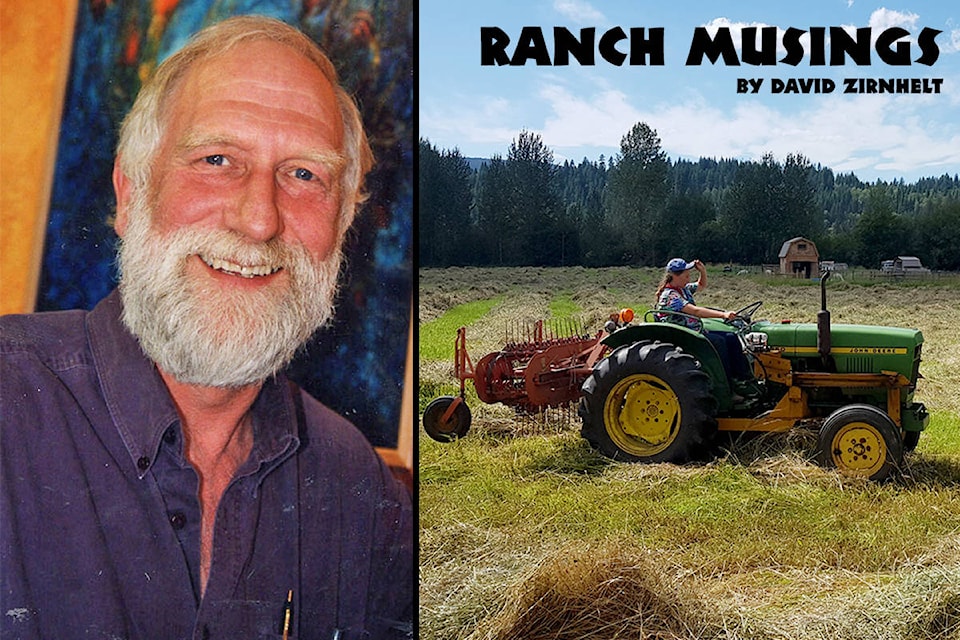This week I am referencing a July 22, Western Producer article taken from a report out of Canada’s Farm Show. It features one probable future of farming.
Rob Saik, farm futurist who made 10 predictions, 10 years ago, has produced another list of 10 factors to watch as the industry worldwide tries to sustainably feed the world’s growing population.
He says that this “infinite sustainability” requires “soil health, water use efficiency, greenhouse gas balance and farm viability.”
These are the factors to watch:
1.) Precautionary principle. This is the idea that products need to be proven safe before they hit the market place. The European Community is requiring this as they oppose genetic modification. Yet this technology, messenger RNA, is being used in the fight against COVID.
2.) Consumer demand. The industry can respond to what consumers want, for example, plant-based protein. Alternatives and non-traditional thinking are a good thing, he says.
3.) Climate Change. Growing regions are changing. Hotter, and wetter weather will allow different crops to be grown. Manitoba is now growing a lot of soybeans, something new.
4.) Tricky measurements. The interest is Carbon sequestration is a good example of a case where some carbon emissions in agriculture can be offset by farming practices such as no-till, which preserves or even increases soil organic matter. A one percent increase in organic matter is about six tons of carbon. But no-till uses Glyphosate to control weeds in crops, so he says this may be the offset for increasing organic matter. He also says that the North American cattle herd peaked in 1971, and would have to increase for there to be an increase in greenhouse gas from meat production.
READ MORE: Groundwater licensing a crisis in the making
5.) Synthetic biology. This includes gene editing and genomics (Genomics is an interdisciplinary field of biology focusing on the structure, function, evolution, mapping, and editing of genomes. A genome is an organism’s complete set of DNA, including all of its genes.). He says the only way to overcome the lower production from organic farming and to farm organically, is to use genetic engineering or synthetic biology.
6.) Sensors. Sensors include weather stations, soil moisture probes, and carbon dioxide measuring devices in grain bins. Farms will become “smarter” as the broadband internet improves. There will have to be a way to integrate all the data we will have, in order to make sense of it all.
7.) Algorithms. This is how to handle and make sense of all this “sensed” data. Much ground truthing is necessary for algorithms to be useful since what works in Australia may not work in Saskatchewan.
8.) Cryptocurrency. Blockchains can track commodity movement and cryptocurrency can be layered over the blockchains and facilitate transactions. Ultimately cryptocurrency can be converted to hard currency.
9.) Robotics. This can overcome labour shortages, as modern milking barns have shown. Machine operators for million dollar machines as hard to find and robotics are coming to fill the gap.
10.) Farm technology integrator. New jobs on farms include “farm technology integrators”. Because experts are hard to find, this job would include using “connectivity” to match information needs of farmers with sources of that information.
Now you have seen one person’s view of the future.
Perhaps local markets and human farm/ranch culture ingenuity can create an alternate future not so dependent upon complex technology. This is a tall order: rehumanize the culture of farming and put people back into all stages of production. This is my hope for regenerative agriculture.
David Zirnhelt is a rancher and member of the Cariboo Cattlemen’s Association. He is also chair of the Advisory Committee for the Applied Sustainable Ranching Program at TRU.
Like us on Facebook and follow us on Twitter.
